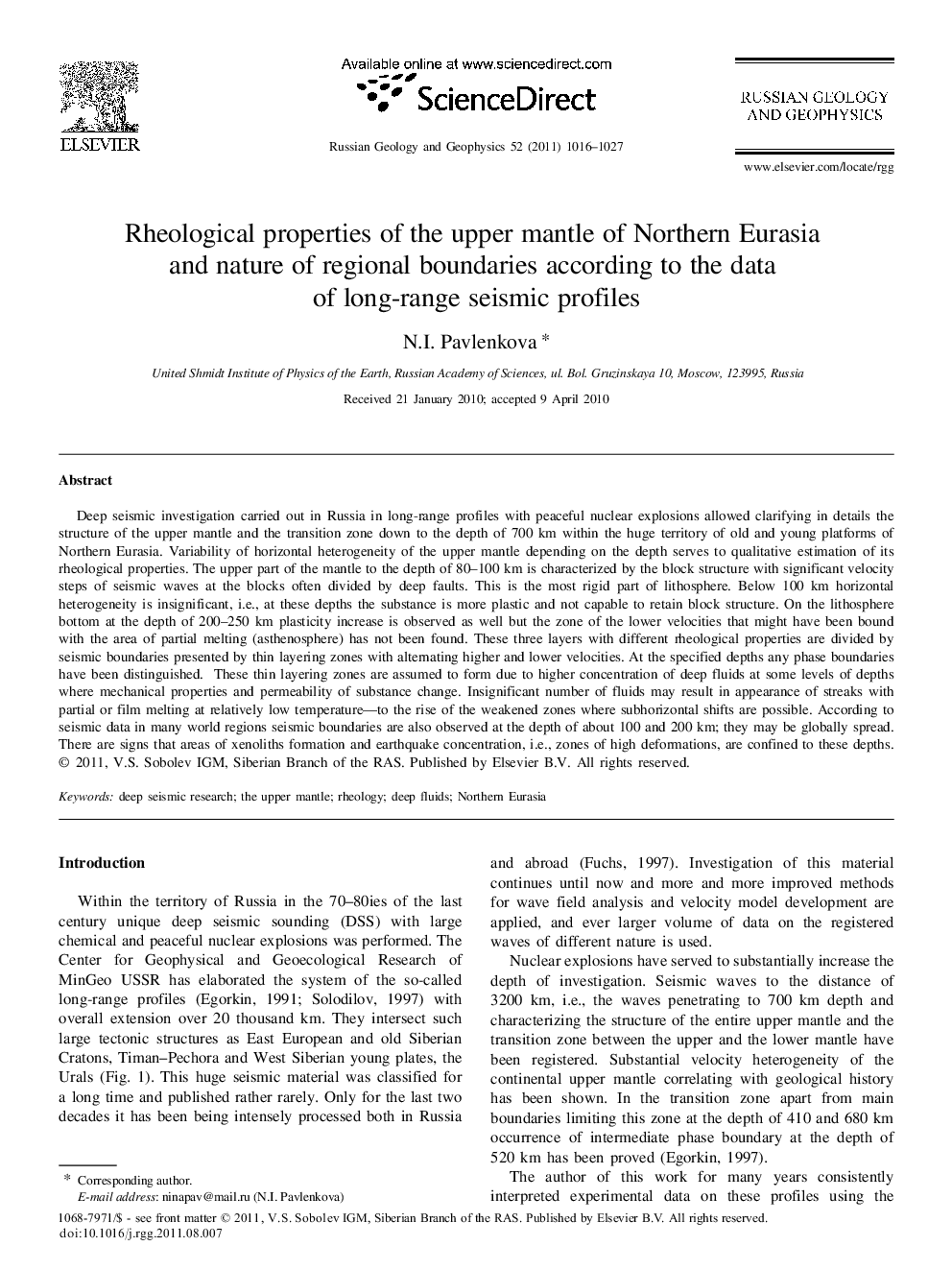| Article ID | Journal | Published Year | Pages | File Type |
|---|---|---|---|---|
| 4739330 | Russian Geology and Geophysics | 2011 | 12 Pages |
Deep seismic investigation carried out in Russia in long-range profiles with peaceful nuclear explosions allowed clarifying in details the structure of the upper mantle and the transition zone down to the depth of 700 km within the huge territory of old and young platforms of Northern Eurasia. Variability of horizontal heterogeneity of the upper mantle depending on the depth serves to qualitative estimation of its rheological properties. The upper part of the mantle to the depth of 80–100 km is characterized by the block structure with significant velocity steps of seismic waves at the blocks often divided by deep faults. This is the most rigid part of lithosphere. Below 100 km horizontal heterogeneity is insignificant, i.e., at these depths the substance is more plastic and not capable to retain block structure. On the lithosphere bottom at the depth of 200–250 km plasticity increase is observed as well but the zone of the lower velocities that might have been bound with the area of partial melting (asthenosphere) has not been found. These three layers with different rheological properties are divided by seismic boundaries presented by thin layering zones with alternating higher and lower velocities. At the specified depths any phase boundaries have been distinguished. These thin layering zones are assumed to form due to higher concentration of deep fluids at some levels of depths where mechanical properties and permeability of substance change. Insignificant number of fluids may result in appearance of streaks with partial or film melting at relatively low temperature—to the rise of the weakened zones where subhorizontal shifts are possible. According to seismic data in many world regions seismic boundaries are also observed at the depth of about 100 and 200 km; they may be globally spread. There are signs that areas of xenoliths formation and earthquake concentration, i.e., zones of high deformations, are confined to these depths.
